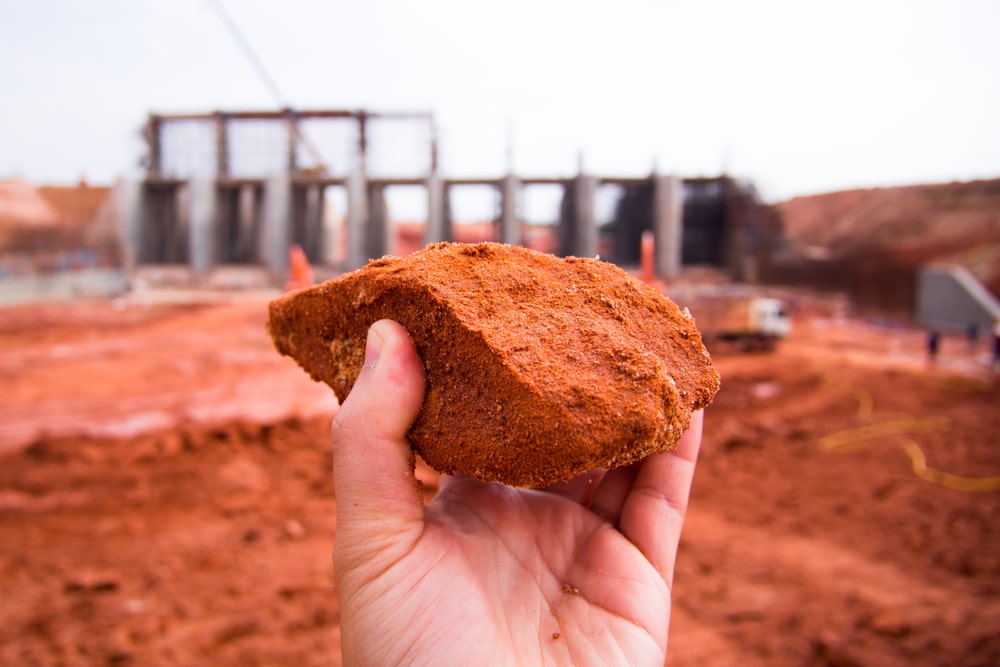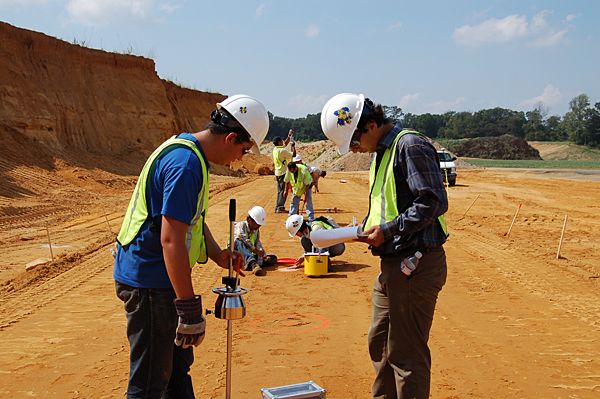Geo Tech Engineer: Enhancing Site Assessments with Advanced Geotechnical Techniques
Wiki Article
Understanding the Essential Duty of the Geotechnical Market in Modern Building Projects and Framework Advancement
The geotechnical sector is a keystone of modern-day construction and facilities advancement, supplying crucial understandings right into soil habits that straight affect project end results. Via sophisticated soil evaluations and cutting-edge engineering services, geotechnical experts not just guarantee architectural honesty yet likewise address sustainability concerns amidst evolving environmental standards.Relevance of Soil Evaluation
Dirt analysis plays a critical role in the geotechnical market, working as the foundation for notified decision-making in construction tasks. Accurate soil examination is important for figuring out the viability of a site for various types of structures, consisting of household homes, commercial buildings, and bridges. By examining soil composition, density, dampness, and stamina material, designers can expect potential difficulties and mitigate threats connected with ground instability, disintegration, and negotiation.The analysis procedure typically includes a collection of examinations and monitorings that provide vital details concerning the subsurface conditions. This data informs the design and building and construction procedures, guaranteeing that structures are improved solid ground with adequate support. Additionally, understanding the soil account allows engineers to choose proper building techniques and materials, optimizing source use and lessening prices.
In addition to guaranteeing architectural honesty, dirt assessment adds to environmental sustainability. By identifying prospective contamination or negative results on bordering ecosystems, designers can apply strategies to protect these natural sources. On the whole, extensive soil evaluation is important in the geotechnical field, underpinning the security, efficiency, and environmental responsibility of construction projects.
Trick Geotechnical Strategies
A selection of vital geotechnical strategies are utilized to enhance the security and examine and performance of construction websites. One foundational method is soil sampling and testing, which enables engineers to identify the chemical and physical buildings of the ground. This information is important for making educated choices concerning foundation design and construction methods.An additional crucial method is site characterization, which involves the thorough analysis of dirt and rock conditions via techniques such as borehole boring and in-situ testing. Techniques like Standard Infiltration Tests (SPT) and Cone Infiltration Examinations (CPT) provide valuable data on dirt stamina and stratigraphy.
Ground enhancement methods, such as dirt stablizing and grouting, are likewise essential in enhancing the load-bearing capability of weak dirts. These methods can alleviate negotiation and improve total site conditions.
In addition, incline stability analysis is essential for recognizing prospective landslide threats and making sure the security of excavations. This evaluation often uses numerical modeling and limitation balance methods to forecast soil actions under various conditions.
Incorporating these geotechnical strategies into construction planning not only optimizes job end results but likewise makes sure the lasting sustainability of infrastructure advancement.
Impact on Construction Security

Furthermore, reliable geotechnical design involves executing reduction methods for determined threats. This might consist of soil stablizing strategies, retaining structures, or drain systems to relieve hydrostatic stress. By addressing these factors, building groups can minimize the likelihood of mishaps and enhance employee safety and security.
Furthermore, continual tracking of website problems is important throughout building and construction. Geotechnical instruments can provide real-time data concerning ground motion and stability, enabling prompt interventions when essential.
In essence, the geotechnical industry plays an essential role in securing construction jobs. By focusing on ground stability and utilizing extensive assessment techniques, the geotechnical sector not only protects the workforce however likewise contributes to the long life and integrity of created infrastructure.
Sustainability in Geotechnical Practices

Additionally, geotechnical engineers are now using advanced technologies, such as geosynthetics, which improve dirt security while lowering the volume of product required. This not only preserves sources but likewise brings about less waste generation (geo tech engineer). The combination of lasting layout concepts right into geotechnical engineering urges making use of sustainable power resources in construction processes, better decreasing carbon discharges
By conducting these assessments, geotechnical specialists can develop strategies that minimize negative effects, making sure conformity with environmental regulations. On the whole, the focus on sustainability within geotechnical methods not just contributes to the durability and strength of framework however additionally promotes a liable approach to land and resource monitoring.
Future Trends in Geotechnical Design
Advancement is driving the future of geotechnical design, as arising modern technologies and techniques improve the industry. The assimilation of advanced data analytics and expert system is readied to revolutionize site investigation and risk analysis, making it possible for designers to make even more enlightened decisions based on real-time data. The usage of geosynthetic materials is obtaining grip, providing lasting remedies that boost soil security and minimize environmental influence - tailings engineer.An additional considerable pattern is the fostering of automated and robotic systems for surveillance and construction procedures. These modern technologies not only enhance accuracy but additionally improve safety by reducing human participation in unsafe environments. Furthermore, the implementation of Building Details Modeling (BIM) in geotechnical layout helps tailings engineer with improved partnership among stakeholders, maximizing task shipment and reducing prices.
As climate change presents brand-new obstacles, the sector is progressively concentrating on resilience and versatility in style techniques, making sure facilities can stand up to severe weather events. Ultimately, the ongoing fad toward sustainability will drive advancement in environmentally friendly products and approaches, lining up geotechnical engineering with more comprehensive environmental objectives. Jointly, these fads will certainly shape a more effective, sustainable, and durable geotechnical landscape for future projects.
Verdict

The geotechnical industry is a keystone of modern building and construction and infrastructure development, providing important insights into dirt behavior that straight influence task results. engineer of record.Soil assessment plays a critical function in the geotechnical industry, serving as the structure for informed decision-making in construction projects. Generally, comprehensive soil evaluation is indispensable in the geotechnical field, underpinning the safety, effectiveness, and environmental obligation of building and construction projects
Building and construction security is considerably affected by geotechnical methods, as the stability and stability of the ground straight affect the overall safety and security of a building and construction site.In conclusion, the geotechnical sector is vital in modern-day construction and infrastructure growth, offering vital analyses that guarantee architectural honesty and safety.
Report this wiki page